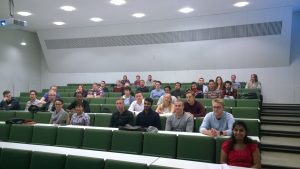New article highlights the importance of the fire -induced pressure
Our latest article, titled ‘Experiments and Numerical Simulations of Pressure Effects in Apartment Fires‘ is now available at Fire Technology -journal. It is OpenAccess.
In this paper we summarize the experimental findings and numerical simulation validation. The main conclusion of the experimental work was that the pressure in normal apartment fire can become dangerously high if the fire development is as fast as in the experiments. (Simulations later in the project showed that in fact, fast t2-fire is enough to cause problems.)
So what is so dangerous about pressure?
First, we noticed that very soon after the ignition, the pressure exceeds the level of 100-200 Pa, meaning that the inwards opening door cannot be opened from inside. A person trying to leave the apartment in the early stages of the fire would not be able to do so!
Secondly, a bit stronger fire, ignited in the closet of the apartment, was able to break the light-weight external wall of the apartment. This is shown also in the Youtube-video as well.
The sensitivity of the over-pressure to the envelope air-tightness was very clearly demonstrated. This means that the above-mentioned problems will become more and more important when we build modern air-tight buildings for the sake of energy efficiency, or in order to manage the conditions inside very tall buildings.
Now, when the Finnish building code for structural fire safety (E1) is under modification, it is important to take these findings into account, and require that the pressures are taken into account in building design, along with the traditional threats like fire spreading.














